-
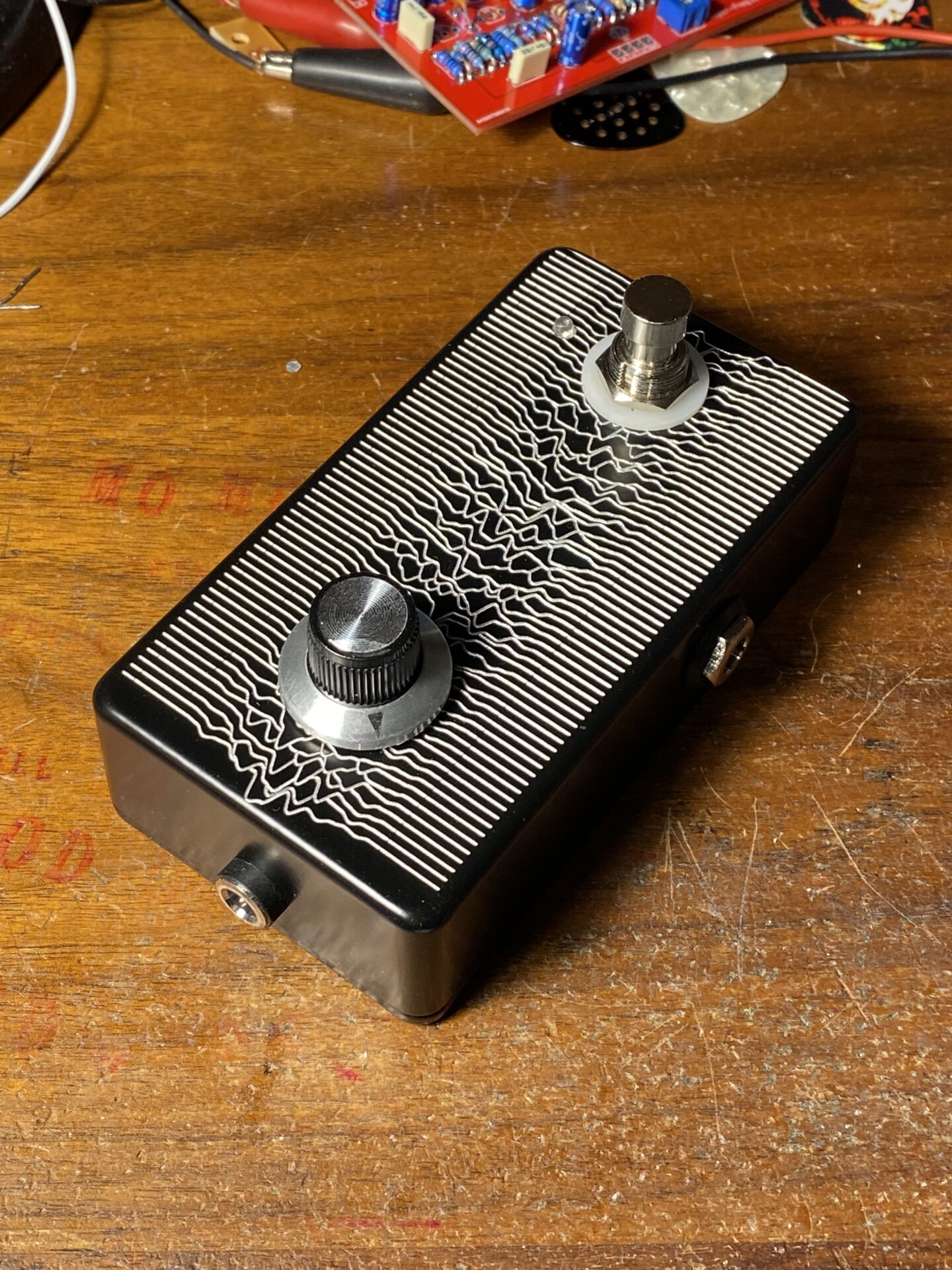
Kay Fuzz Tone
Here is a kay Fuzztone clone. This is an octave-type fuzz that uses a full-wave rectifier. It is similar to the Super Fuzz and all its variants. The Kay Fuzz Tone uses fewer transistors than the Super Fuzz so you could think of it as a stripped-down and simpler version. The kay Fuzz Tone came…
-

New PCB Day
Here are some new PCBs. I ordered these from PCBWay.com. The best deal there is ordering 10 boards 100 by 100mm. Since shipping can be high, ordering several designs brings shipping down to reasonable rates. This order with 6 designs came out to about $1 per board, very reasonable. In this batch I have a…
-

Knobs and dials
I got some of these knobs with these generic dials/scale disks. Might be good for something. These were $9.99 at amazon.
-

CA3046/3086 transistor array
The CA3046 is a 14 pin DIP that contains 5 NPN transistors. CA3086 and CA3045 are the same chip with a different number and some other esoteric differences. There is also an LM3046 and LM3086, same chip different manufacturer. What is a transistor array? The CA3046 contains 5 NPN transistors in a single 14 pin…
-
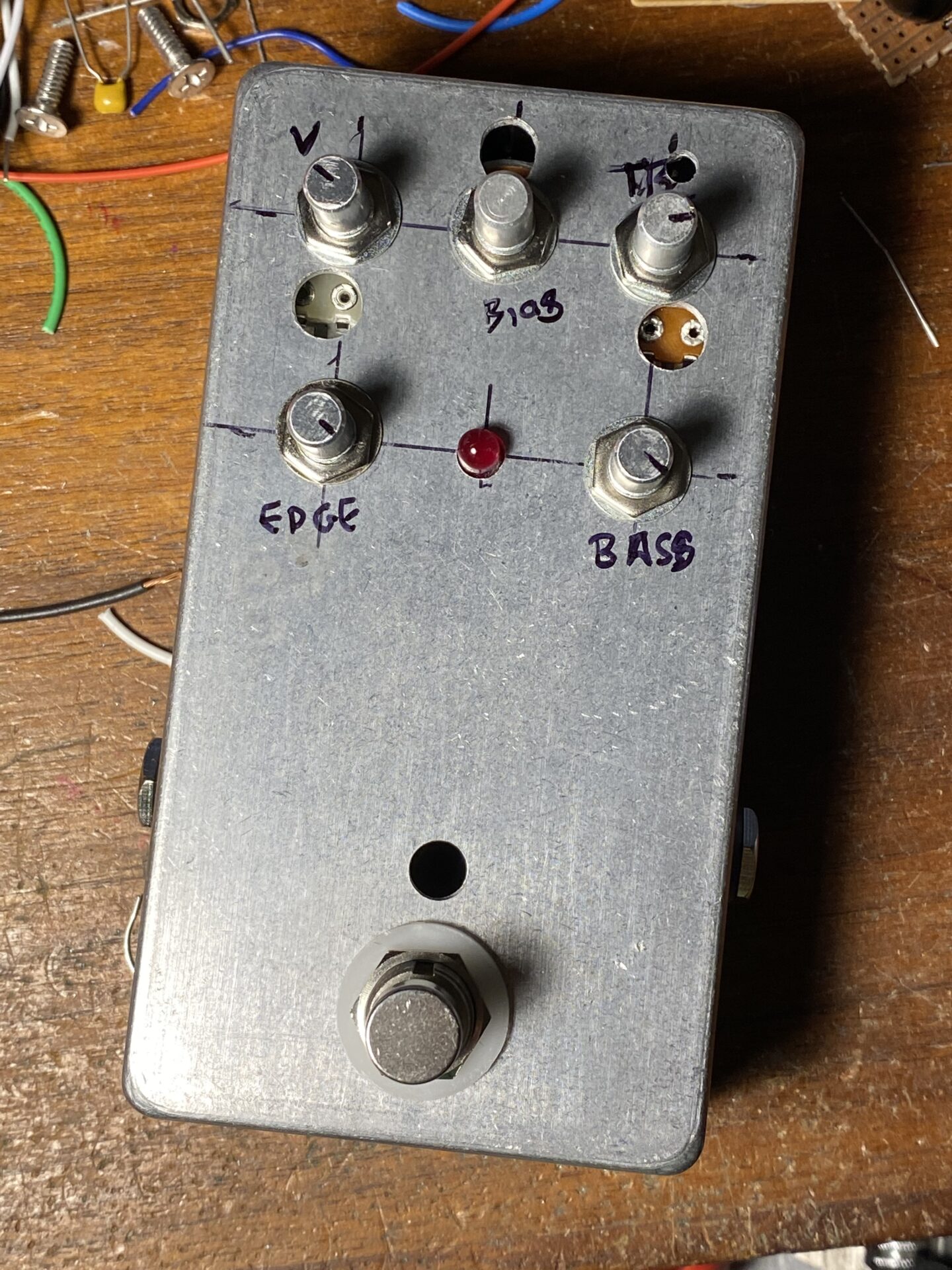
Distort-o-Matic XI Stompboxology
Here’s another project from Nicholas Boscorelli’s Stomboxology newsletter: Going Discreet. Described by the author as: All-transistor distortion box with aggressive tone controls. Nicholas Boscorelli When I look at this I see a diode clipper similar to the Electra, DOD 250, MXR Distortion+, Proco Rat, and others, combined with a Super Fuzz octave Fuzz type octave…
-
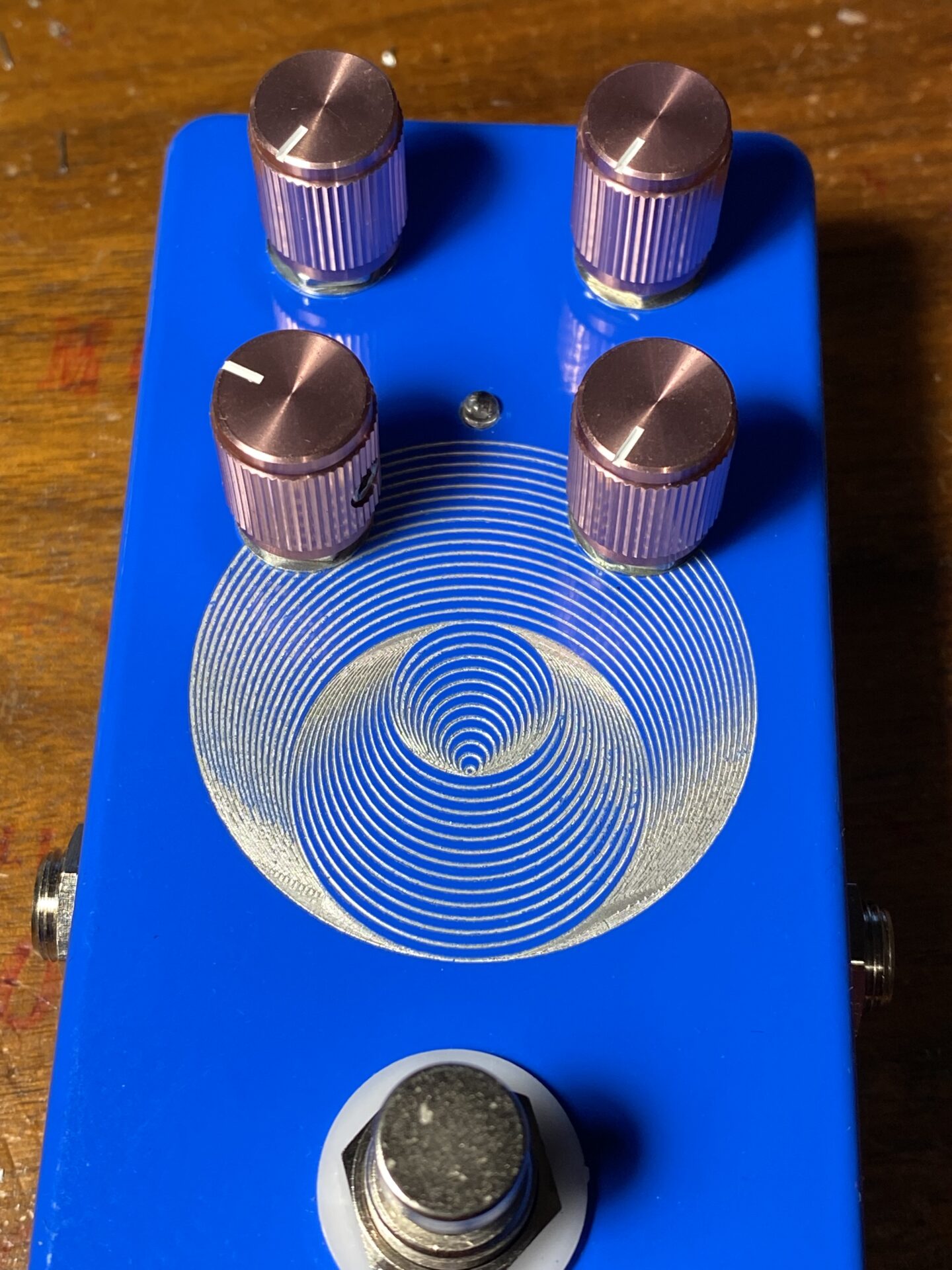
Ugly Face blue
A blue Ugly Face. I used PCBs from PCBWay.com and put everything into a blue powder-coated enclosure from Tayda. I wanted to put some blue knobs on this enclosure but didn’t have any on hand. I didn’t want to place an order for four knobs. Looking through my parts bin, I found these pink aluminum…
-

Flat Line by John Hollis
The Flatline is a compressor with a simple effective design. It works surprisingly well for its simplicity. I’ve built a few of these over the years on strip board. This time I decided to make my own printed circuit boards. Who is John Hollis? John Hollis was an early contributor to the DIY Pedal scene.…
-
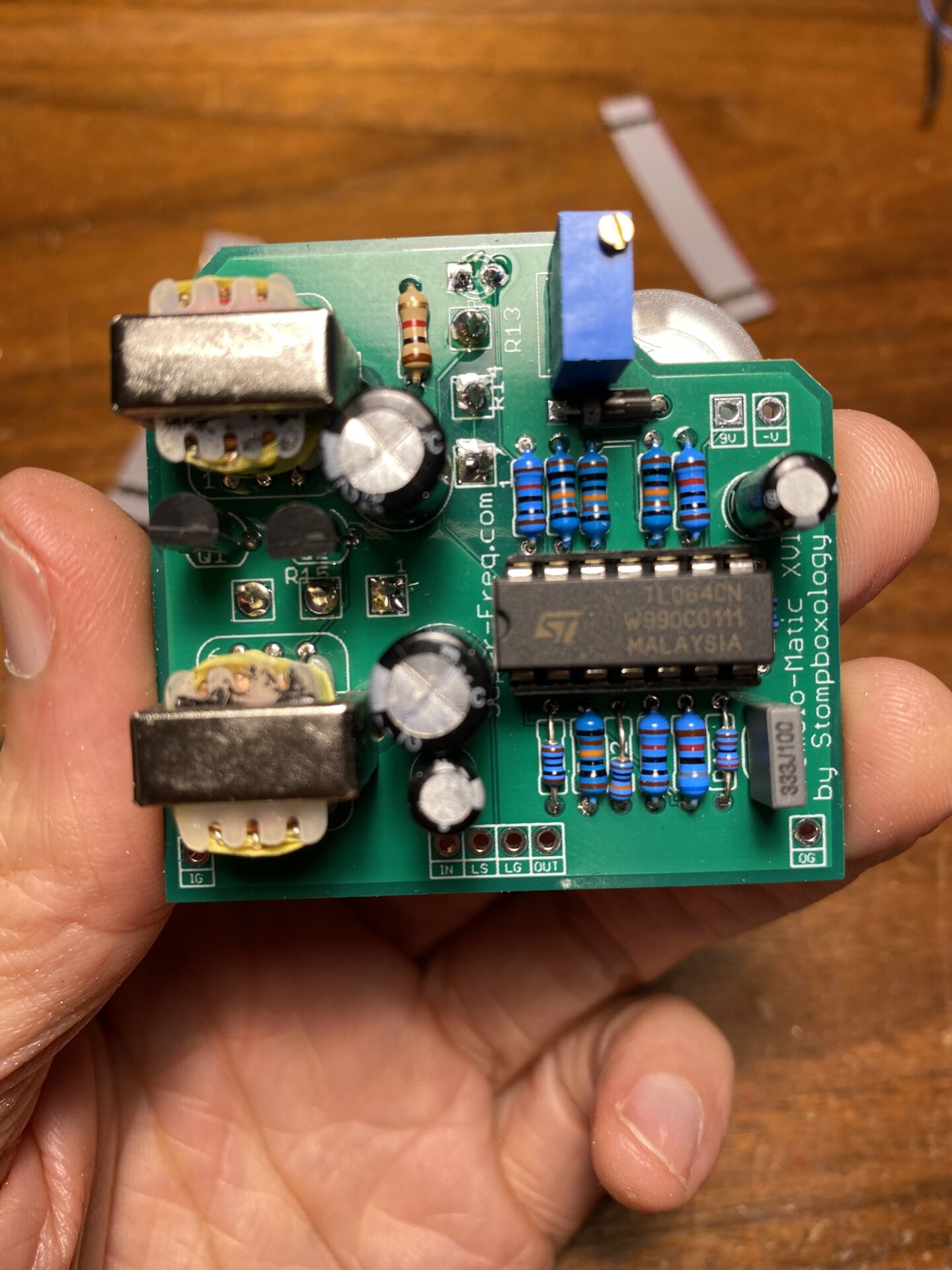
Tremolo-Matic XVIII Build
This is a tremolo built around a couple inductors, its from the Stompboxology newsletter: Going Discreet issue. If you’re not familiar, Stompboxology was a newsletter produced by Nicholas Boscorelli around 2002. It had many stompbox ideas, including circuits, layouts, and analysis. The Going Discreet issue is about building circuits with transistors. This issue has the best description…
-
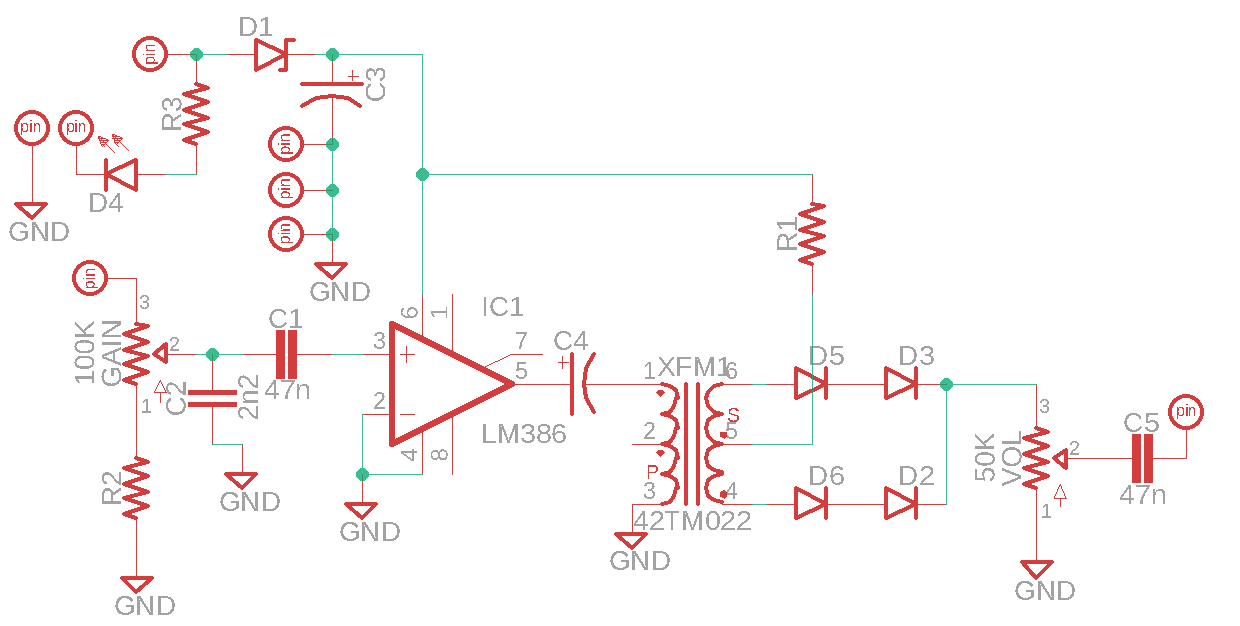
Bobtavia analysis
This is a quick look at how the Bobtavia works. The Bobtavia is uses the LM386 to amplify the input signal. In the default setup the LM386 has a gain of 20. The output of the LM386 runs through a 220µ C4 cap into a small audio transformer. The input appears at one output of…
-
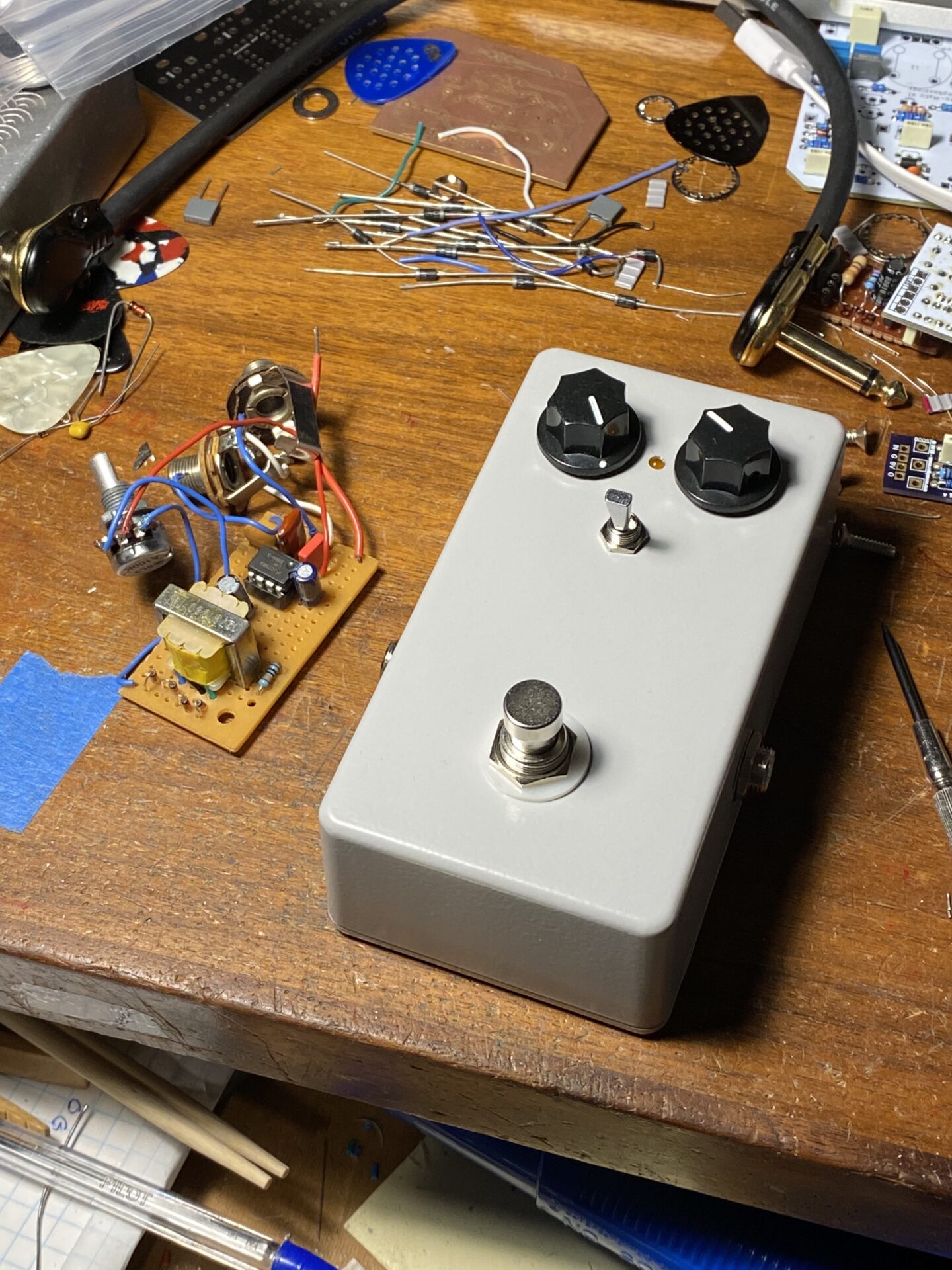
Bobtavia by Bob Starr
Bobtavia is an old-school DIY octave fuzz. It’s a lot like the Roger Meyer Octavia but uses an LM386 instead of transistors. The Bobtavia uses a transformer like the original Octavia and the Maestro Brassmaster. What’s nice about the Bobtavia is its simplicity. The whole circuit is just a handful of parts. This was one of the first…
-

Titan boost analysis
Here is a closer look at the Titan Boost by John Hollis. The circuit uses an op-amp to boost and buffer the input signal. This is fed into an inductor that steps up the voltage at the output. The amplifier is built around a TL072 dual op-amp IC1_A and IC1_B. The first stage, IC1_A, is…
-
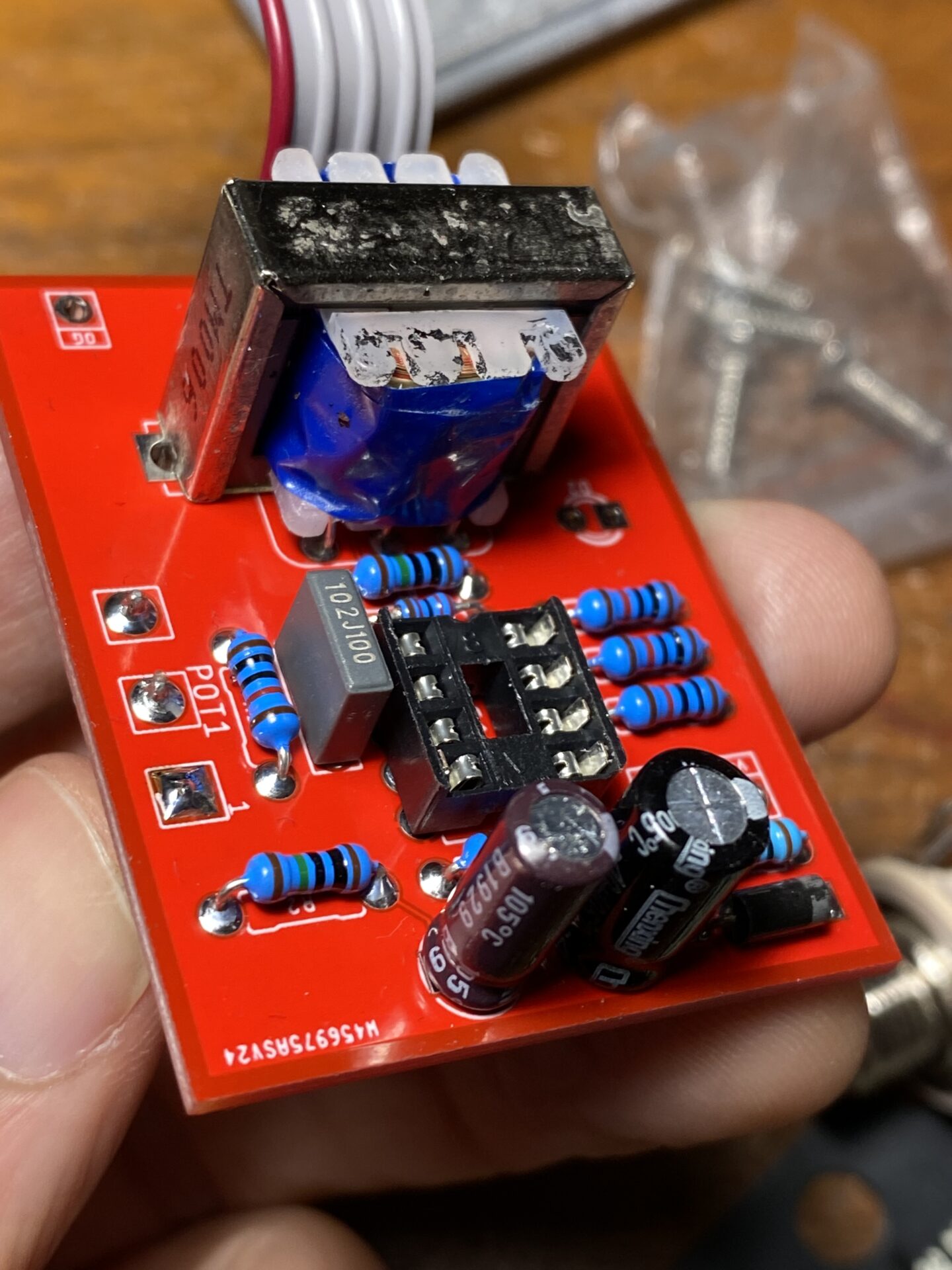
Titan Boost build
Here is a build of John Hollis’ Titan Boost. I built this a long time ago and liked the sound. There is also a mod to turn it into an octave up. John Hollis was involved with the early DIYStompbox community. He posted some amazing and original designs on his site. The site seems to have been…